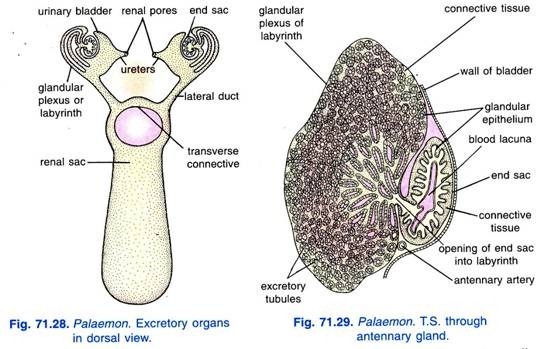In this article we will discuss about T. bellirica:- 1. Description of T. bellirica 2. Distribution of T. bellirica 3. Parts Used 4. Collection and Preparation 5. Constituents 6. Uses.
Contents:
- Description of T. bellirica
- Distribution of T. bellirica
- Parts Used in T. bellirica
- Collection and Preparation of T. bellirica
- Constituents of T. bellirica
- Uses of T. bellirica
1. Description of T. bellirica:
This is a large tree attaining a height of 30-40 mtrs. and a girth up to 3 mtrs., often buttressed at the base. Leaves broadly elliptic, acute at both ends, 10- 18 cm. long, alternate and clustered near the end of the branches; petiole almost half the length of the blade. Spikes axillary, dense flowered.
Flowers polygamous, very small, with a strong odour, bracteolate; bracteoles minute, caducous. Calyx cam- panulate, 5 lobed; lobes valvate, caducous. Corolla absent, stamens 10, inserted on the calyx tube with an epigynous disc in the hermaphrodite flowers. Ovary mono- capillary, inferior; ovules 2-3. Drupe ovoid, velvety outside, 1-seeded, 2-3 cm long.
2. Distribution of T. bellirica:
In the plains of India, excepting the arid region; nowhere abundant.
3. Parts Used in T. bellirica:
Pulp of the fruit.
4. Collection and Preparation of T. bellirica:
Half ripe fruits are collected and dried in shade. These are marketed as such.
Description of the drug:
The drug is sold in market as dry fruits, which are ovoid, 2-3 cm. long dark greyish brown and velvety outside.
5. Constituents of T. bellirica:
The fruit contains β-sitosterol, gallic acid, ellagic acid, ethyl gallate, galloyd glucose, chebulagic acid, mannitol, glucose, galactose, fruticose and rhamnose. Half ripe fruits contain an oil similar to castor oil.
6. Uses of T. bellirica:
The pulp is used as a laxative or purgative either alone or mixed with the pulp of the fruits of Terminalia chebula or Emblica officinolis. The fruits together form the “Trifala” of the Indian”Kabirajas and it is a strong purgative.
